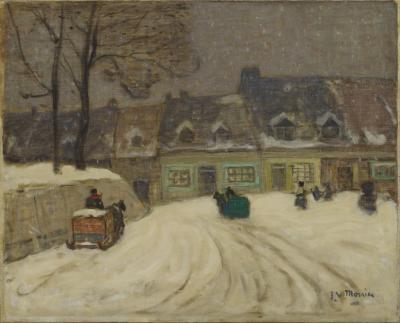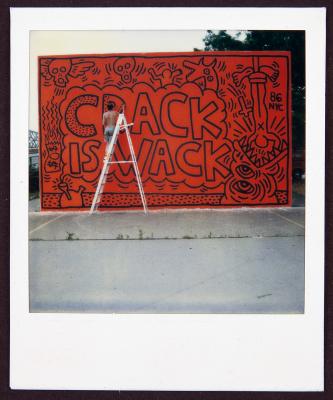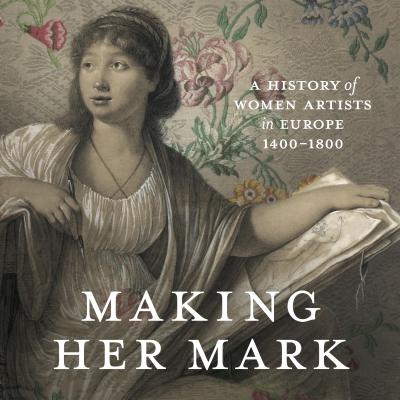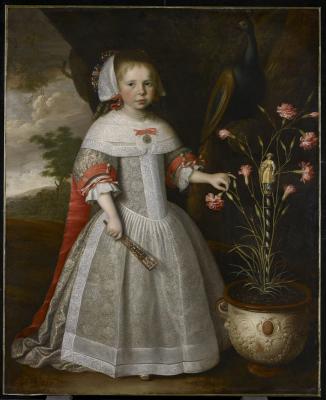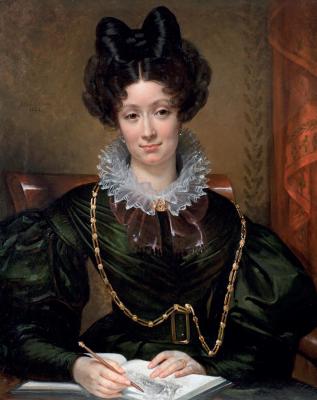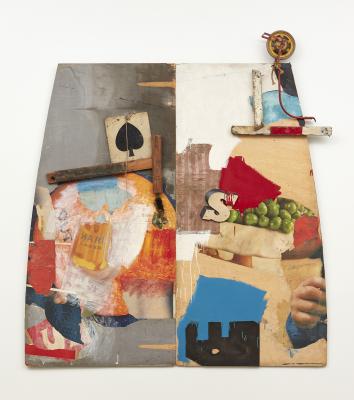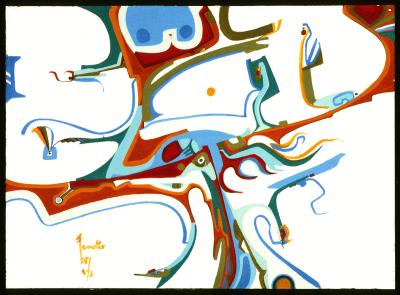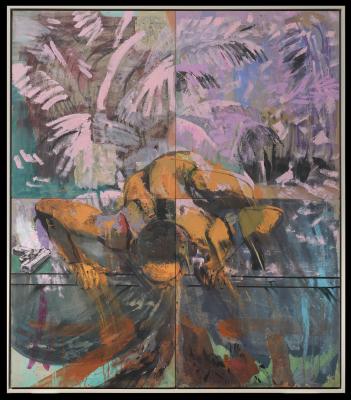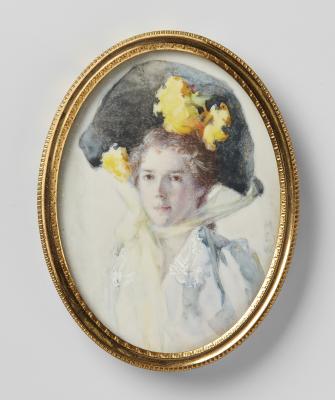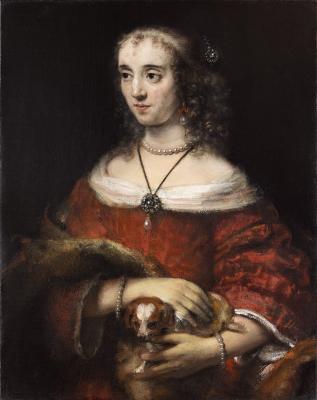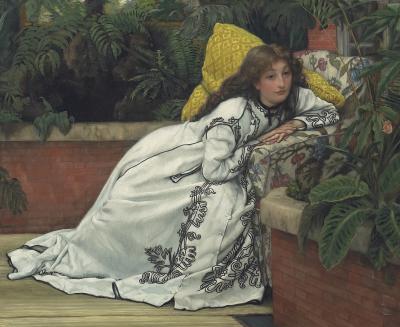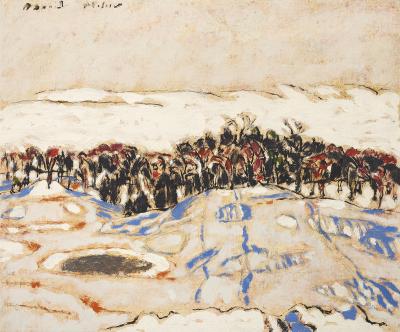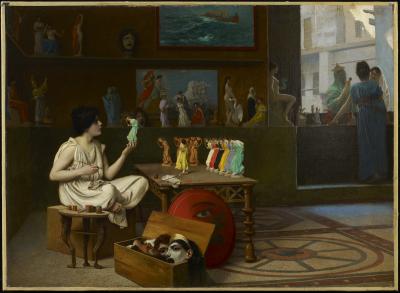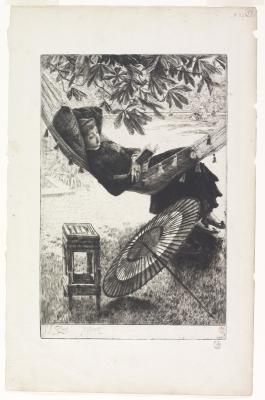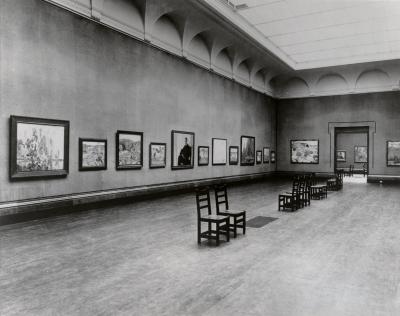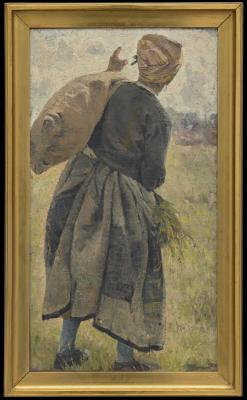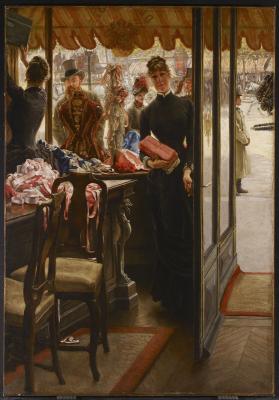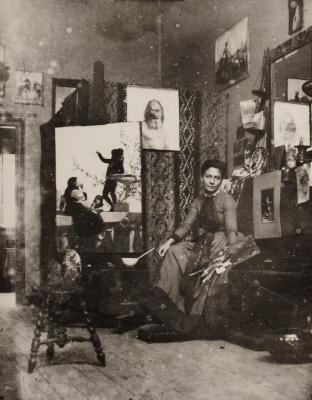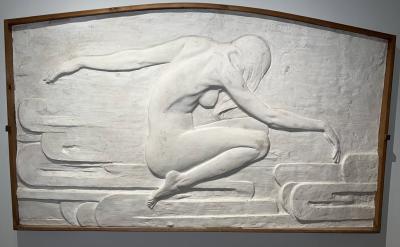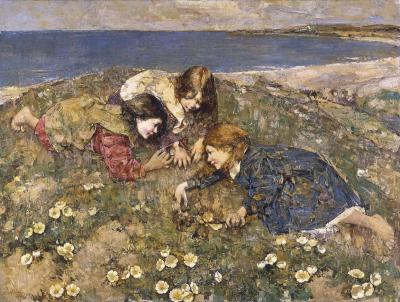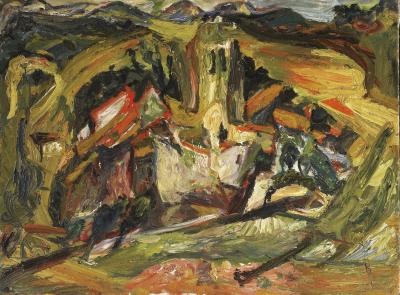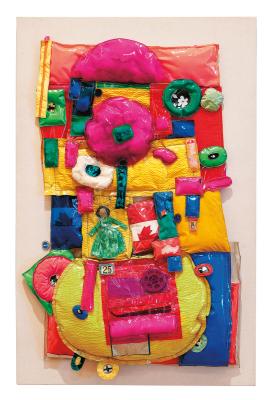Bertha Wegmann Makes Her AGO Debut
Now on view, Scandinavian artist’s tightly cropped scene packs emotional punch

Bertha Wegmann. Woman Carrying a Potato Sack, 1889. Oil on canvas mounted on board, 71 × 39.5 cm. Purchase, with funds from the European Curatorial Committee, and with funds by exchange from Morey and Jennifer Chaplick, 2024. Photo © AGO
For centuries artists have sought inspiration far from home, and their work reminds us of the beauty and vitality of transcending borders, cultures, and languages. Swiss-born Danish artist Bertha Wegmann (1847-1926) understood her cross-border existence as essential to her creativity and her ultimate success. New to the AGO Collection, Wegmann’s Woman Carrying a Potato Sack (1889) is on view in the AGO’s Richard Barry Fudger Memorial Gallery on Level 1, surrounded by art from Europe and Canada. The painting is the third by a Scandinavian artist to go on view here, joining Swedish artist Anna Boberg’s beloved Sunlight and Shadows (c.1901-1912) and fellow Dane Vilhelm Hammershøi’s Interior with four etchings (c.1897), just steps away.
As an immigrant to Denmark at a young age Wegmann struggled to find acceptance, but her many achievements on an international stage soon led her adopted country to recognize her importance. She went on to earn a degree of success that would be remarkable for any artist, woman or man. After studying painting in Munich, she moved to Paris in 1881 and in the same year, received honourable mention for her submission to the Salon—Europe’s most significant exhibition of contemporary art at the time. The first woman member elected to the Danish Royal Academy of Fine Arts, and the first woman appointed to a seat on an important Danish jury committee, Wegmann went on to represent Denmark internationally, showing at the World’s Fairs in Paris in 1889 and 1900, and in Chicago in 1893. Constantly on the move, she often gave her “home” address as a hotel or a friend’s home. Scholars have described her travel as a form of resistance against a nationalist and male-dominated society, freeing her to transcend, at once, gendered expectations and restrictive notions of citizenship.
Painted in 1889, Woman Carrying a Potato Sack is a beautiful enigma, asking more questions than it answers. Seen from behind, the lone female figure, likely a farmer, carries a heavy load with one arm outstretched and her finger pointing toward the horizon. Wegmann intentionally withholds from us this woman's story. Without a glimpse of the figure's facial expression or any evidence from her surroundings—we can only imagine how far she has come or where she is going. Heightening this tension, Wegmann positions the woman breaking the horizon line and nearly bursting out of the picture frame, imbuing her with a monumental presence. Across her work Wegmann represented women in all stages and walks of life, such that in the words of one scholar, her oeuvre itself “forms a kind of feminist manifesto.”
While the narrative may be left to the viewer to guess, Wegmann’s dynamic brushwork offers a glimpse into her methods.“Wegmann’s work very often reveals a deep interest in the materiality of the objects she paints,” says Caroline Shields, Curator, European Art, AGO. “The undulating folds of the figure’s skirt convey its thick texture, and her brushwork reveals her process: working the surface of still-wet paint, the upper layers cut across and deform the underlying paint. The painting fits chronologically and stylistically with Wegmann’s naturalist period, visible in the colour palette and subject matter. At the same time, the intensity of the composition and the lack of narrative context lend a symbolist quality to the work. We can see evidence of the artistic freedom that her travels afforded her in the ability of this work to transcend such categories.”
Visitors to the AGO may recognize some similarities between the Wegmann and its near neighbour, Vincent Van Gogh’s A woman with a spade, seen from behind (1885).
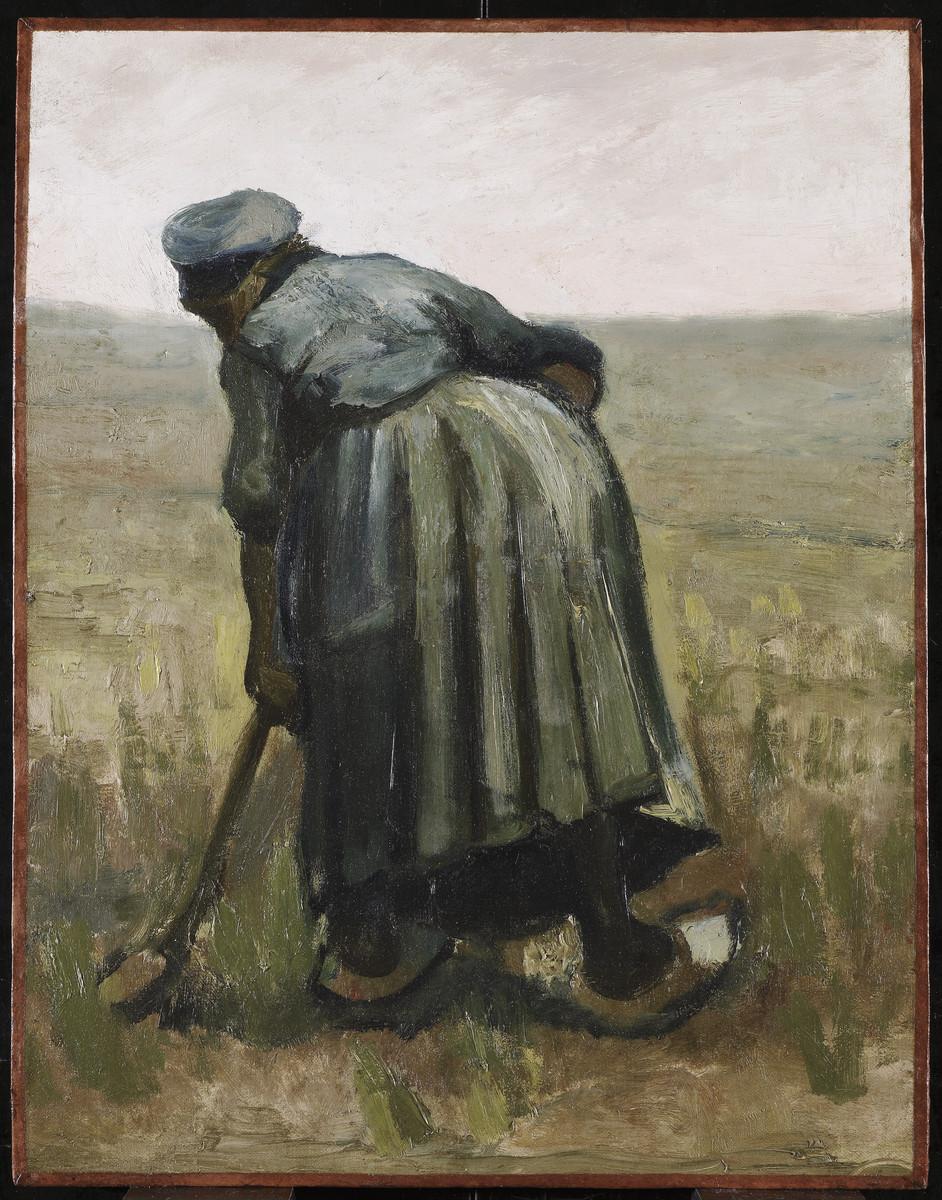
Vincent van Gogh, A woman with a spade, seen from behind, 1885. Oil on canvas on wood panel. Overall: 41.7 x 32.3 cm. Gift of Ann and Lawrence Heisey, 1997. © Art Gallery of Ontario. 97/156.
Born in the Netherlands, Van Gogh (1853-1890) painted this work just before he moved to France. Like Wegmann, he too found inspiration in travel. It is no coincidence that Van Gogh’s figure also bears a monumental presence: both artists shared a deep respect for labour and the working class. Showcasing the colour palettes that marked their respective early careers, looking closely at these canvases in person will reveal that despite the appearance of muted tones, in fact the canvases are composed of vivid, even acidic colours.
Welcome Bertha Wegmann’s Woman Carrying a Potato Sack to the AGO and find the work on view alongside other great works of European and Canadian art in the Richard Barry Fudger Memorial Gallery (gallery 125) on Level 1 at the AGO.

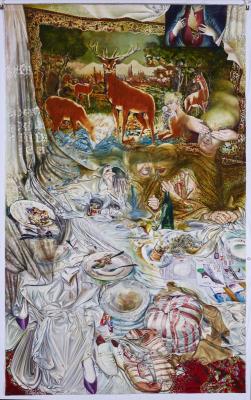


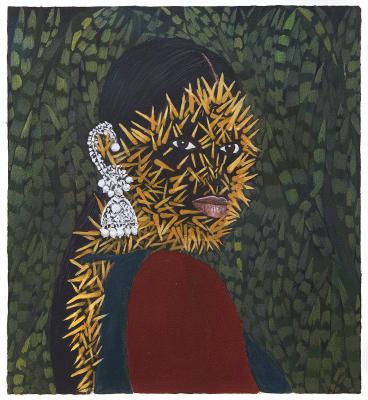

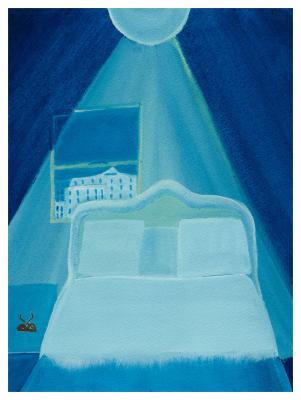

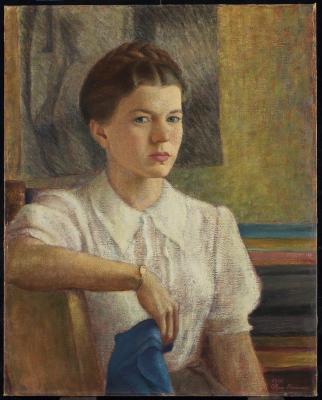
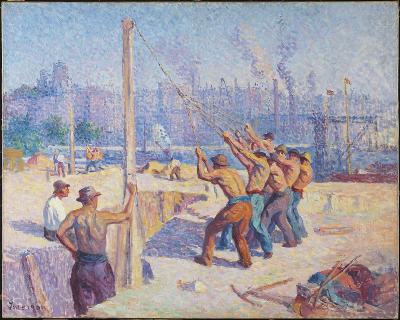

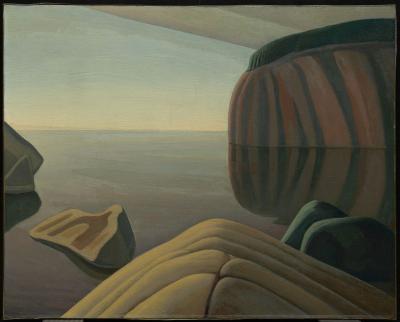

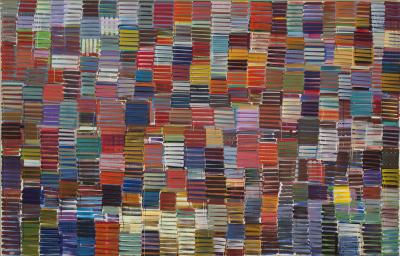


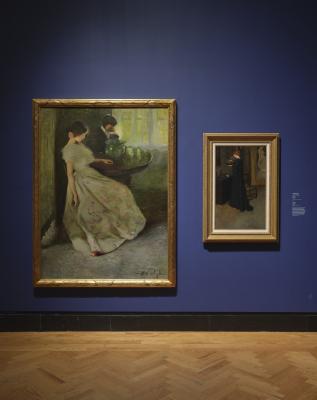
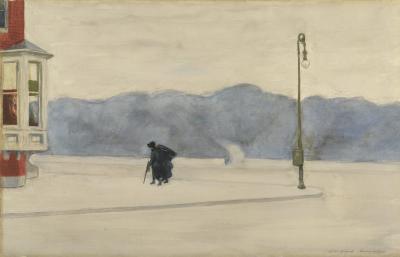


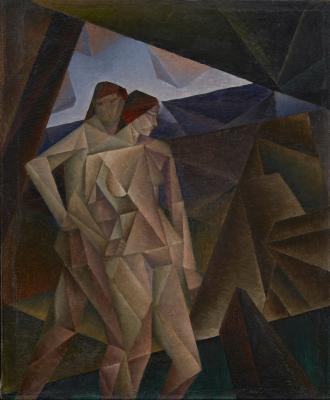
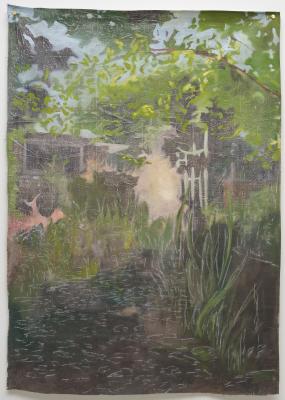
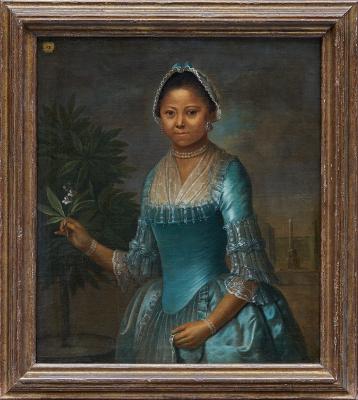
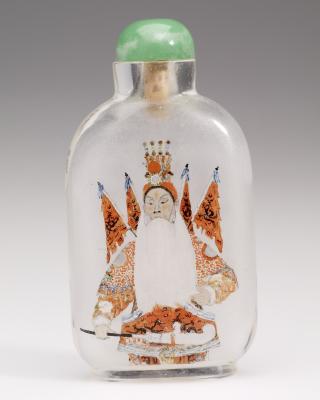
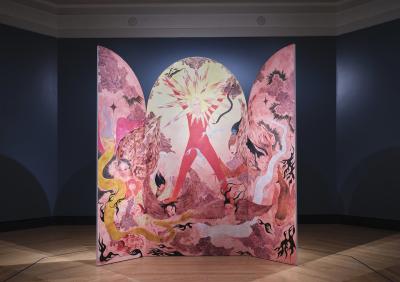
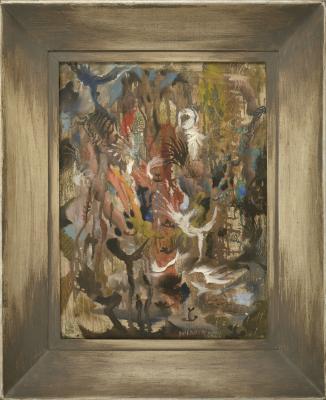

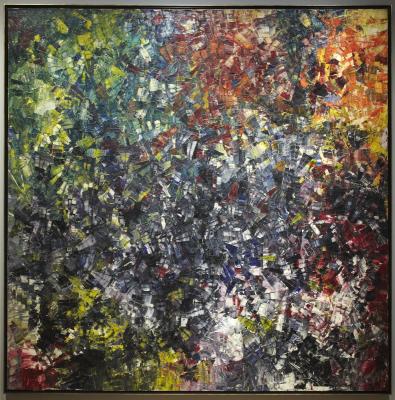
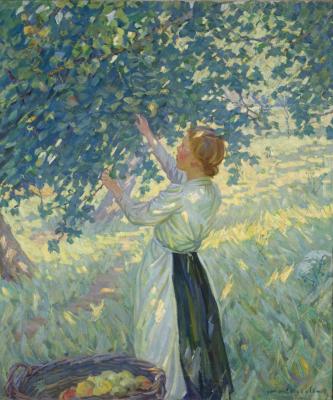
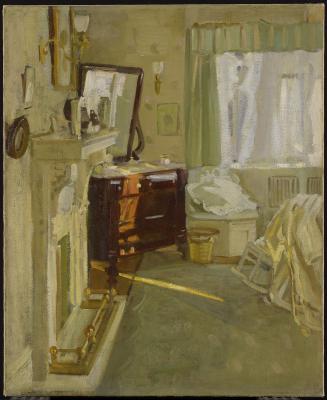




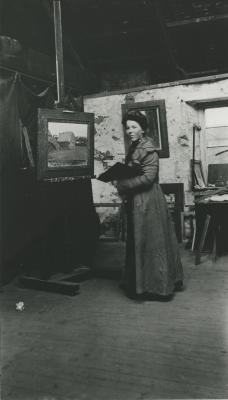




![Keith Haring in a Top Hat [Self-Portrait], (1989)](/sites/default/files/styles/image_small/public/2023-11/KHA-1626_representation_19435_original-Web%20and%20Standard%20PowerPoint.jpg?itok=MJgd2FZP)


